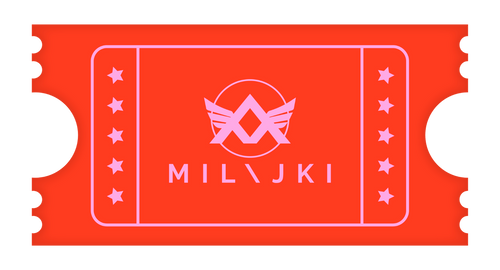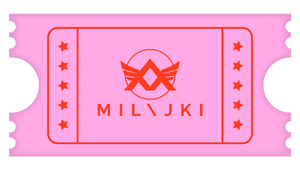So what is an NFT?
NFT stands for Non-Fungible Token, and it is a type of digital asset that represents ownership or proof of authenticity of a unique item or piece of content, such as a piece of art, music, video, or even a tweet. Unlike cryptocurrencies like Bitcoin, which are fungible (interchangeable), NFTs are unique and cannot be replicated or exchanged for an equivalent value. NFTs use blockchain technology, which provides a secure and transparent ledger of ownership and transfer of the digital asset. This allows creatives and collectors to monetize their digital works and collectibles in a new way. NFTs are bought and sold on various online marketplaces, and the value of an NFT is determined by market demand, scarcity, and the perceived value of the underlying content.
How to buy and sell NFT?
Now you can easy join the world of NFT in less than a minute! Many popular platforms have integrated a way to pay with credit card or your crypto MATIC wallet of choice, like metamask or coinbase. It is a digital wallet used to store, manage, and secure cryptocurrencies, such as Bitcoin, Ethereum, or other altcoins. It operates like a traditional wallet, but instead of storing physical currency, it stores digital currency in the form of encrypted codes. A cryptocurrency wallet has a unique public address, similar to a bank account number, that is used to receive cryptocurrency, and a private key, which is like a password, that is used to access and spend the cryptocurrency.
Here are some popular examples of cryptocurrency wallets:
MetaMask: A browser-based wallet that can be used as an extension for Chrome, Firefox, Brave, and Opera browsers.
MyEtherWallet (MEW): An open-source, client-side interface for creating and managing Ethereum wallets.
Ledger: A hardware wallet that stores cryptocurrencies offline, providing enhanced security for your digital assets.
Trezor: Another popular hardware wallet that offers secure storage for your cryptocurrencies.
Exodus: A desktop and mobile wallet that supports a wide range of cryptocurrencies and provides a user-friendly interface.
Coinbase Wallet: A mobile wallet that allows you to store and manage your cryptocurrency, as well as make transactions on decentralized apps (dApps).
Binance: A cryptocurrency exchange that also offers a wallet service to store your cryptocurrency.
In conclusion, a cryptocurrency wallet is a digital wallet used to securely store, manage, and use cryptocurrency. It operates similarly to a traditional wallet, but instead of storing physical currency, it stores digital currency in the form of encrypted codes. These are just a few examples of the many cryptocurrency wallets available. It's important to carefully consider your needs and the security features offered by different wallets before making a decision on which one to use.
So what is a cryptocurrency?
Cryptocurrency is a digital or virtual currency that uses cryptography to secure transactions and control the creation of new units. The most popular cryptocurrencies include:
Bitcoin (BTC): Bitcoin is the world's first and largest cryptocurrency, known for its decentralized nature and limited supply of 21 million coins. Pros: It is widely accepted as a form of payment, has a strong track record and a high level of security, and its value can potentially increase significantly over time. Cons: It can be volatile and subject to sudden price swings, transaction fees can be high during periods of high demand, and the lack of regulation can make it a risky investment.
Ethereum (ETH): Ethereum is a decentralized platform that enables the creation of smart contracts and decentralized applications (dapps). Pros: It is highly flexible, has a large developer community, and its blockchain can be used to build and launch new decentralized applications. Cons: It is still in its early stages of development, and its adoption is limited compared to other cryptocurrencies, and its network can sometimes experience scalability issues.
Ripple (XRP): Ripple is a real-time gross settlement system, currency exchange, and remittance network created by Ripple Labs Inc. Pros: It has a fast transaction speed, low fees, and is designed to facilitate cross-border payments. Cons: It has a highly centralized structure, with most of its supply owned by the company, and its adoption is limited compared to other cryptocurrencies.
Bitcoin Cash (BCH): Bitcoin Cash is a spinoff of Bitcoin, created to address scalability issues and increase the block size limit. Pros: It has faster and cheaper transactions compared to Bitcoin, and its block size limit is larger, making it more suitable for everyday transactions. Cons: Its adoption is limited compared to Bitcoin, and there is a lack of consensus among its community on its future direction.
Polygon: (previously known as Matic Network) Polygon is a Layer 2 scaling solution for Ethereum, aimed at solving the scalability and cost issues associated with Ethereum's high transaction volume and congestion. Pros: Polygon has significantly lower transaction costs compared to Ethereum, making it a more cost-effective option for developers and users. It also uses PoS consensus, which is faster and more energy-efficient than the PoW consensus used by Ethereum, reducing the carbon footprint and environmental impact of the network. Cons: While Polygon has seen some growth in recent months, it is still not as widely adopted as Ethereum, and may not have the same level of community support and resources.
Solana: Solana was created with the goal of providing fast, secure, and scalable solution for use cases that require high transaction volumes and low latency. Pros: It boasts fast transaction processing, low fees, scalability, and a growing community. Cons: It is a relatively new and immature technology with limited user adoption and security concerns, and is subject to market volatility and regulatory
In conclusion, each cryptocurrency has its own pros and cons, and the choice of which one to invest in depends on individual investment goals, risk tolerance, and the perceived value of the underlying technology and community. It's important to thoroughly research and understand the risks and potential rewards before investing in any cryptocurrency.
Where to mint, sell, and buy NFT's?
There are numerous marketplaces where individuals can mint, sell, and buy NFTs. These marketplaces offer a wide range of NFTs, from digital art to collectibles and gaming items. Here's a summary of some of the most popular NFT marketplaces:
OpenSea: OpenSea is the largest NFT marketplace, with a wide range of NFTs available, including digital art, collectibles, and gaming items. It's known for its user-friendly interface and its focus on community building.
Rarible: Rarible is an NFT marketplace that allows creators to mint and sell their own NFTs, as well as buy NFTs from others. It offers a range of NFTs, including digital art, music, and gaming items, and is known for its low fees and easy-to-use platform.
SuperRare: SuperRare is a high-end NFT marketplace that focuses on digital art and other rare and valuable NFTs. It has a curated selection of NFTs and is known for its strict standards for quality and rarity.
NBA Top Shot: NBA Top Shot is a marketplace for buying, selling, and trading officially licensed NBA highlights in the form of NFTs. It's one of the most popular NFT marketplaces, with a large user base and a fast-growing market.
Foundation: Foundation is a marketplace for buying, selling, and trading unique digital assets, including NFTs. It offers a range of NFTs, including digital art, collectibles, and gaming items, and is known for its user-friendly interface and fast and secure transactions.
In conclusion, the choice of which NFT marketplace to use depends on the individual needs and preferences of the NFT buyer or seller, such as the type of NFTs they are interested in, the fees, and the platform's user experience. It's important to research and compare the various marketplaces before deciding on one to buy or sell NFTs on.
What does it mean to mint an NFT?
Minting is the process of creating a new non-fungible token (NFT) on a blockchain. There are several different types of minting, including:
Manual Minting: This is the traditional method of minting NFTs, where an individual or organization creates an NFT by manually uploading the token's details and metadata to the blockchain. This method is more time-consuming but provides greater control over the creation process.
Smart Contract Minting: This type of minting uses automated scripts, known as smart contracts, to mint NFTs. The smart contract specifies the terms and conditions of the NFT, such as the number of tokens to be minted and the distribution method. This method is faster and more efficient than manual minting, but can also be less flexible.
Batch Minting: This method involves minting a large number of NFTs at once, typically used for mass-produced items such as collectible trading cards or virtual real estate. Batch minting is faster and more efficient than manual or smart contract minting, but can lead to a loss of control over the creation process.
Lazy Minting: This type of minting involves creating a single NFT that can be divided into multiple smaller NFTs, each representing a unique item or piece of content. This method is useful for large collections or portfolios of NFTs, as it allows the creator to easily manage and distribute the collection.
In conclusion, there are several different types of NFT minting methods, including manual, smart contract, batch, and lazy minting, each with its own benefits and drawbacks. The choice of which method to use will depend on the specific needs and goals of the NFT creator.
How does NFT's effect the environment?
The NFT (non-fungible token) trend has brought attention to the environmental impact of blockchain technology and the cryptocurrency industry as a whole.
Blockchain networks, including those used for NFTs, require a vast amount of energy to operate and maintain. This energy consumption results in a significant carbon footprint and contributes to the overall greenhouse gas emissions of the industry. The energy consumption of blockchain networks is largely driven by the process of "mining," which involves using powerful computers to solve complex mathematical problems in order to validate transactions and add new blocks to the blockchain. This process requires a significant amount of energy and generates a large amount of heat, which further contributes to the carbon footprint of the industry. Additionally, the storage of NFTs on the blockchain also requires energy, as each NFT must be stored and maintained on multiple nodes in the network. This further contributes to the energy consumption and environmental impact of the NFT trend.
The environmental impact of lazy minting is still a topic of debate in the NFT and blockchain communities. While lazy minting can reduce the energy consumption of the NFT minting process by reducing the number of transactions required, it is important to note that it is still a blockchain-based technology and requires computational resources to operate.
In conclusion it's worth mentioning that some blockchains, including Polygon, are exploring alternative consensus algorithms that are more energy-efficient and environmentally sustainable. Additionally, some NFT marketplaces and platforms are exploring ways to offset their carbon footprint, such as through investment in renewable energy or carbon credits. While lazy minting can help reduce the energy consumption of the NFT minting process, the overall environmental impact of NFTs will depend on the specific technology and infrastructure being used.
How can creatives use NFTs to fund, distribute, and sell merchandise?
As NFTs are unique and have a limited quantity they have become a popular tool for various genres of creatives to fund, distribute, and sell merchandise. Here's a summary of how different genres can use NFTs:
Visual Artists: Visual artists can use NFTs to sell their digital art pieces as limited edition prints. They can also sell exclusive merchandise such as digital wallpapers, animations, and videos.
Musicians: Musicians can use NFTs to sell their music as limited edition releases, merchandise such as autographed posters and physical copies of albums, and VIP experiences like concert tickets or meet and greets.
Writers: Writers can use NFTs to sell their works as limited edition copies, such as autographed copies of books or signed manuscripts. They can also sell merchandise related to their work, such as bookmarks, posters, and t-shirts.
Gamers: Gamers can use NFTs to sell unique in-game items, like skins, weapons, or avatars, that are one-of-a-kind. They can also sell merchandise related to their games, such as t-shirts, keychains, and figures.
Filmmakers: Filmmakers can use NFTs to sell limited edition copies of their films, merchandise such as autographed posters and physical copies of the film, and VIP experiences like behind-the-scenes tours or private screenings.
In conclusion, NFTs offer a new and innovative way for creatives across various genres to fund, distribute, and sell their work and merchandise in a more secure and engaging way for their fans.
What is a token-gated community?
A token-gated community is a online platform, usually a website or a social network, where access to certain content, features or benefits is restricted to members who possess a specific digital token or cryptocurrency. The token serves as a form of membership or subscription, providing the holder with access to exclusive or premium content, products, or services. For example, a token-gated community for a particular cryptocurrency project might offer access to early product releases, community events, or special offers to members who hold the token associated with that project. Token-gated communities are often used to create a sense of exclusivity, reward loyal members, and incentivize users to participate in the wider ecosystem of a project. In a token-gated community that utilizes Non-Fungible Tokens (NFTs), access to certain content, features, or benefits is restricted to members who possess a specific NFT. As explained previously, NFTs are unique digital assets that are stored on a blockchain and represent ownership of a specific item or asset.
For example, in a token-gated community focused on art, members might be required to own an NFT that represents a specific piece of art to gain access to exclusive content related to that art, such as behind-the-scenes information about the creation process, or access to virtual events related to the artist. In this way, the NFT acts as a form of "ticket" or "key" that grants access to the token-gated community and its benefits. NFTs also provide a secure and transparent way of verifying membership and ownership, as the blockchain ensures that each NFT is unique and cannot be duplicated or falsified.
NFTs can also be used in conjunction with immersive experiences like Alternate Reality Games (ARGs) to create unique and immersive experiences for players. In an ARG, players interact with a narrative that unfolds across various platforms and media, often through puzzles and challenges that must be solved in order to progress. By incorporating NFTs into an ARG, players can collect and own unique digital assets that serve as proof of their progress and accomplishments within the game. For example, players might collect NFTs that represent special items or achievements that they have earned, such as virtual artifacts or character skins. These NFTs can then be traded or sold on the open market, adding an extra layer of value and incentive to the game. In this way, NFTs can help to create a sense of ownership and investment in the game, encouraging players to continue playing and participating in the ARG. NFTs also provide a secure and transparent way of verifying progress and ownership within the game, helping to prevent cheating and ensure a fair experience for all players.
In this sense, NFTs serve as a powerful tool for creating exclusive, highly valuable experiences within a token-gated community, and help to foster a sense of community and shared ownership among members.



